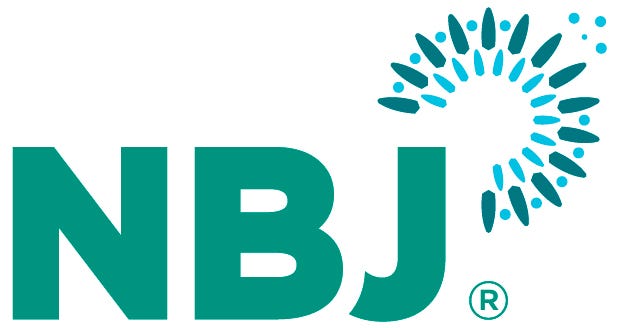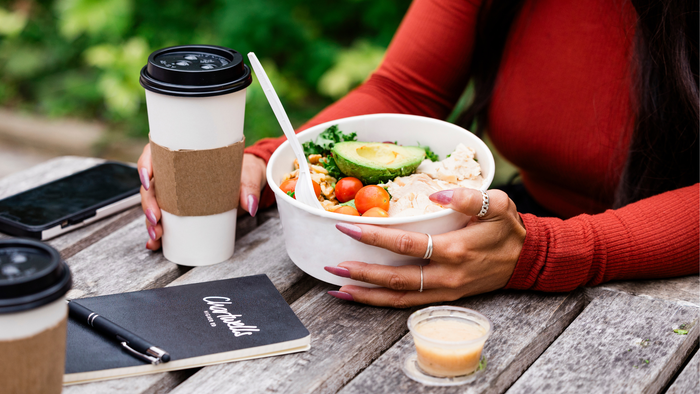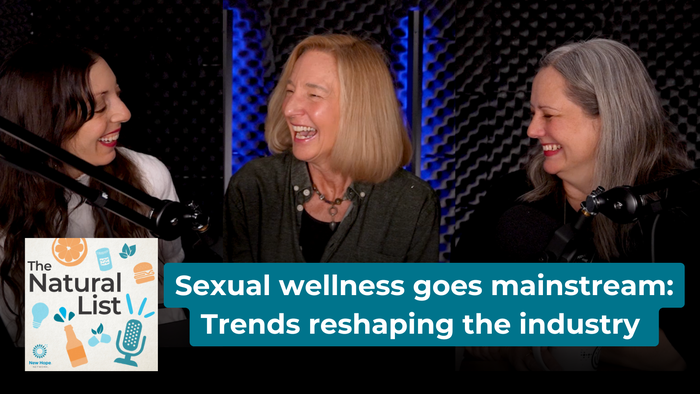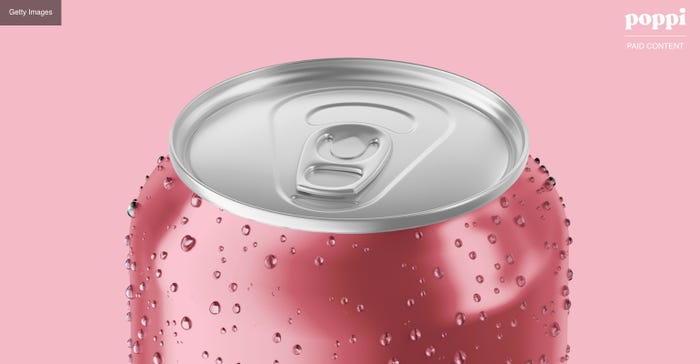
Our years of a smooth-sailing economy are over: inflation is back with a vengeance, rising faster and lasting longer than most economists had predicted. According to the U.S. Bureau of Labor Statistics, the consumer price index climbed steadily each month of 2021 before dipping slightly in August. Then in September, it boomeranged back up, increasing 5.4% over the year prior.
Every single industry is feeling the burn. The nutrition sector is no exception. Still fielding sky-high consumer demand, driven by the COVID-19 pandemic, the nutrition industry now faces widespread supply shortages and jacked-up prices on nearly every component needed to produce a dietary supplement or natural food, beverage or personal care product.
A tangled mess of factors have spawned this inflationary environment. And with complex supply chains that hopscotch the globe, even as a deadly virus wreaks havoc in different regions at different times, it’s difficult to disentangle the issues or to chalk out a clear timeline of X caused Y caused Z. But in a nutshell, industry is currently besieged by skyrocketing freight costs, diminished manufacturing at home and abroad, congestion at ports, labor shortages, increased labor costs, extreme weather events and water scarcity plaguing agriculture—and the list goes on.
Certainly, COVID-19 certainly threw a giant wrench into the supply chain. But many of these issues have been bubbling below the surface for years, just waiting to boil over. Now that they have, they are all colliding and exacerbating one another, ultimately choking supply and driving prices ever higher.
“Right now feels like the perfect storm, with all of the levers of economics coming together to drive this,” says Rifle Hughes, head of strategy and innovation at food and beverage consulting JPG Resources. “We’ve never experienced so many things coming together in a way that is so detrimental—and across all industries, not just food and supplements—and it keeps getting scarier.”
Many companies, from dietary supplement and food brands to contract manufacturers to ingredient suppliers, had been, until very recently, managing the challenging pandemic era reasonably well. But over the last several months, with demand staying elevated and supply increasingly pinched, they’ve faced bigger roadblocks—and more of them—than ever before.
“When COVID-19 hit and everyone turned to supplements, demand shot through the roof for most brands we manufacture for,” says Vincent Tricarino, vice president of contract manufacturing at NutraScience Labs. “Because we buy raw materials and components ahead, we were in a good position to handle the increase, and we held steady through the beginning of this summer. Then the faucet turned on, with supply shortages, worker shortages, plant shutdowns overseas, trucking issues, not enough space on boats, problems at the ports, etc. Suddenly, prices increased dramatically, and lead times got significantly longer.”
Unfortunately, all signs point to inflation lingering well into 2022, if not longer, impacting every link in the value chain and, ultimately, consumers’ wallets. For companies in the nutrition industry, the challenge will be to keep consumers engaged without falling too deep into the red.
“This is going to be a tough period,” says Krishnakumar Davey, president of strategic analytics at IRI. “With all of the supply, demand and pricing challenges, if you don’t pass on price increases, you are going to eat them, and your margin goes down. So you’re damned if you do, damned if you don’t.”
Relentless demand
Aside from the myriad supply challenges, the demand side of the economic equation is itself a significant factor driving inflation. After record-smashing dietary supplement sales in 2020, NBJ expects further growth in 2021, as consumers continue to invest in their health. Shoppers are also still purchasing more nutritious natural and organic foods, despite higher costs than conventional counterparts.
“If demand in 2019 was 100%, then in 2020, it went up to 130%,” says David Solomon, president of botanical and spice manufacturer BDS Natural Products. “Now it has come back down some, but demand is still probably at 115% to 120% of 2019.”
In fact, with consumers still spending more time at home than before the pandemic, demand remains incredibly high for all consumer packaged goods. Throughout 2020, CPG demand hovered at 10% above 2019, according to Katie Denis, vice president of research and industry narrative at the Consumer Brands Association. By contrast, she says typical year-over-year increases are about 2%.
“We figured that by March 2021, we would start to see the demand drop, but it’s been the exact opposite,” Denis notes. “In the second quarter of 2021, it was up 8.5% over the year before. So far, we’ve only seen increasing demand, and it isn’t showing any signs of slowing down.”
Part of this, says Davey, is that people are continuing to buy more goods than services, with their travel and entertainment dollars going toward CPG, including food. Additionally, IRI data reveal that shoppers are still buying more premium food products “because they are flush with money,” Davey says, thanks to stimulus payments and higher wages. He adds that consumer spending has been trending upward for the last six quarters.
Thus, Denis says, the relentless demand for CPG is absolutely exacerbating supply constraints, as the system has had no opportunity to recover from the initial shock of the pandemic.
Labor woes
Among the multiple factors triggering inflation throughout CPG, labor might be the most significant. The issue is twofold: there are not enough people to fill jobs; and companies must offer higher wages to attract and retain workers.
“Honestly, labor is really what’s driving the price concerns and supply issues right now,” Denis says. “Our economist would ballpark it at 70% of these issues being [due to] labor shortages.” To put that in perspective, she says, the CPG industry added 5,000 jobs in September—but it currently has 140,000 job openings.
The worker shortage, in turn, is causing material costs to skyrocket. Denis says the price of aluminum, for example, used widely by supplement and food manufacturers, has jumped nearly 100%. “It’s not that we have a shortage of aluminum, though,” she says. “We have a shortage of people to turn aluminum into cans, foil or other products.”
According to Davey, Americans are opting out of jobs in factories, fields, foodservice and other key entities for many different reasons, whether early retirement, defection to the gig economy or not enough incentive to work due to unemployment benefits or stimulus payments.
Solomon says this phenomenon is already impacting the availability of some botanical ingredients, especially small-dollar botanicals wildcrafted in the U.S., such as pleurisy. “Nobody is out collecting,” he says. “Many collectors have realized that, with all the incentives, they make more money sitting on the couch. And I get it. They were not paid enough to begin with.”
Manufacturers in particular are struggling to fill roles. “Thankfully, on Long Island we are doing OK labor-wise; it takes longer to hire, but people here want to work,” Tricarino says. “However, it costs more to hire now because we’re bidding for people. If a warehouse employee costs X, we’re now adding X plus 15% because they’re not taking the jobs otherwise.”
Increased labor costs across the supply chain will keep prices high for some time. “Vendors tell me that once normalcy comes back, they are not going back to $2 per kilo—they’ll charge $5 per kilo going forward—mainly because of having to pay workers a higher rate,” says Al Sabino, vice president of supply chain at Lief Labs. “All of these overhead costs are adding up, so price increases are not going away anytime soon.”
Logistical logjams
Largely because of labor constraints, freight costs have skyrocketed. Whether by boat, truck, train or plane, access to transportation has dwindled while transport times have slowed to a crawl.
“Transportation costs sit on top of everything, and that’s where we see this elevation of price holistically,” Tricarino says. “If a material is in stock, the price on it might be the same as before, but the transportation cost is likely much higher.”
Compounding matters, Solomon says, simply accessing containers in a material’s country of origin is problematic. He expects freight rates to go down by the end of the first or second quarter next year but remain elevated above pre-pandemic prices: “Those containers that were in the $2,500 to $3,000 range will probably settle into the $6,000 to $8,000 range because container lines have been running at a loss for years.”
How the industry is handling inflation
Price fluctuations and materials shortages are nothing new to this industry, and companies typically find creative ways to avoid passing them onto the next ring of the value chain. “Most of the time, if brands are not planning ahead, their forecasting is off or they are out of stock, contract manufacturers can figure something out, pull them out of the weeds and get a product back in stock quick,” Tricarino says. “But the current supply constraints and price increases have taken a lot of those abilities out of our hands.”
He notes that as a service provider, NutraScience Labs always tries to absorb as much of an added cost as possible. “The last resort is to tell a brand that has been working with us for years that suddenly there will be a 30% price increase on their product,” Tricarino says. “First, we try to exhaust every single option. But unfortunately, eventually, the increases do get passed on to the end user.”
Sabino says that increasing prices is the most unpleasant conversation to have with business partners. “We understand they are also facing struggles, so we look hard at efficiencies and try to reduce our production costs as opposed to passing price increases to our customers,” he says. “But if the cost of a raw material increases 35%, no increase in efficiency will be enough to offset that. So sometimes we have to pass on those price increases in a very minimal way, and we give them at least 90 days’ notice.”
These conversations are about to become more common, Solomon notes, once yearly contracts expire and manufacturers set new prices for 2022.
Many brands are already grappling with cost increases. “They are requiring more line time at manufacturing facilities because there is less labor available, and manufacturers are having to pay more for labor, so their toll rates are up,” says Hughes. “But for now, brands are mostly absorbing these costs, as retailers don’t let them adjust pricing any day of the week. So consumers mostly haven’t seen impact of this at the checkout line yet.” E-commerce prices, on the other hand, have been creeping up slightly faster than retail, he adds, because brands have more control over day-to-day pricing.
Higher prices hit consumers
There are only so many costs that suppliers, manufacturers and brands can absorb until, ultimately, consumers must pay more for finished goods. Experts say we’re now reaching that point at which nutrition consumers, no matter where and how they shop, will start seeing inflation at every turn.
If there is any good news, it’s that every brand and category will be affected, thereby leveling the playing field, in a sense. “We’re seeing broad-based inflationary pressure, so I don’t think we’ll see one company raise prices markedly out of line with its competitors,” Consumer Brands Association’s Denis says. “CPG companies want to be competitive, so they are certainly not going to raise prices any more than they have to.”
As for how consumers are responding to price increases to this point, “so far so good,” IRI’s Davey says. “Consumer price sensitivity and price elasticity came down significantly last year because people didn’t have a choice—they picked whatever product was available on shelf, as opposed to waiting for a deal. As the economy has reopened, consumers have accepted increased pricing. But if prices keep rising, there is a threshold where that is going to break, and people will buy less and substitute.”
Based on IRI data from the 2008–2009 recession, the tipping point is between 7% to 10% higher prices. “It is running around 5% to 6% right now,” Davey notes. “So another couple of points would tip the balance to more value-oriented consumer behaviors: value brands, value retailers, value shopping strategies, such as cutting coupons, value-sized packages.”
“There are only so many dollars you can spend on food, particularly as stimulus money dries up and people have other competing priorities like purchasing holiday gifts and traveling,” Davey says. “Also, gas prices are going up, which always pinches consumers wallets quite a bit.” Given all of these factors, “people are going to start paying more attention to their food bill.”
Hughes points out that in 2020, most means of entertainment were shut down, and now most are back in some way. “So last year consumers weren’t spending entertainment dollars, but this year they are—and food prices are going up,” he says. “This will force people to make some serious choices that were made for them last year.”
However, consumers’ willingness to pay more for products is also tied to their spending power. “If income moves up at a similar rate as food prices, maybe people do continue spending in a similar way,” Hughes says. “Maybe they don’t buy a new TV this year, which they can’t find anyway, but they keep buying more-expensive foods.”
Looking ahead
By all accounts, the inflationary pressures and supply chain bottlenecks will likely persist for some time.
“The supply chain is complex and global, so these things take a long time to unwind and stabilize,” Hughes says. “There are a lot of issues impacting this. So, if we solve one or two of them, that may lessen the pressure and move things in the right direction, but we will still be in this for a while. These issues don’t switch off overnight; they tail down. So I think we can expect at least one more year like this.”
With the busy holiday shipping season coming up, conditions will likely get worse before they get better. But come next spring or summer, Denis believes, the intensity should ease a bit. “Ultimately, it’s all going to hinge on the labor shortage,” she says. “If we can’t get people into these jobs, this will be a much more persistent issue.”
Tricarino is optimistic that some normalization will occur by the end of the first quarter next year. “If we’re still here in the second quarter, still seeing incredible demand and prices through the roof, then something’s got to give,” he says. “The good news is COVID-19 cases are going down, and the percentage of the population that is vaccinated is high, trending us in the right direction. With the ports opening 24/7 and private enterprise getting involved to improve transportation across the country, that should help.”
In the meantime, consumer-facing brands must work smartly to navigate this rough period. “Shoppers have been forgiving so far—but don’t push it,” Davey says. “Brands require a good understanding of who their consumers are, what they are willing to pay, at what point they will say a product is too expensive and switch, and to whom they will switch.”
About the Author
You May Also Like






